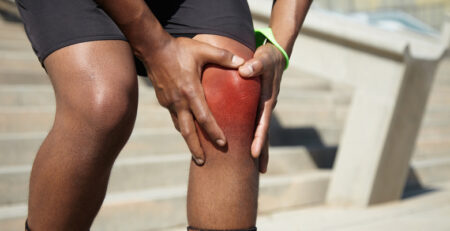Let’s be honest, the idea of voluntarily submerging yourself in freezing water when it’s already cold outside seems, well, a little crazy to most people. Why would anyone leave their warm, cozy couch to take a cold plunge in a lake? But what if I told you that this act of what seems like pure madness is actually one of the most powerful full-body workouts your heart will ever get?
This isn’t just another about a general “it’s good for you” wellness trend. We’re diving deep into the incredible, science-backed ways that cold water swimming and regular cold water immersion can transform your cardiovascular health. This is about more than just bragging rights; it’s about building a heart that’s more resilient, efficient, and strong.
So, let’s forget the trivial chit-chat and get straight to what really happens inside your body when you take that first bracing plunge. (pun totally intended).
Table of Contents
The Shock That Wakes Up Your Entire System
The moment your body hits the cold water, something amazing happens. It’s called the “cold shock response.” Your skin’s cold receptors send a panic signal to your brain, and your body goes into a state of high alert. For your cardiovascular system, this triggers two immediate and dramatic changes:
- Your Heart Rate Skyrockets (At First): That initial gasp and feeling of your heart pounding in your chest? That’s real. The shock of the cold causes a sudden surge of adrenaline, making your heart beat much faster for the first minute or so.
- Your Blood Vessels Constrict: To preserve core body temperature, your body performs a magic trick called vasoconstriction. It tightens the blood vessels near your skin and in your extremities, shunting blood away from the surface and towards your vital organs—your heart, brain, and lungs.
This first few immersions can feel intense, even overwhelming. But over time, this controlled stress becomes a powerful training stimulus. Each session teaches your cardiovascular system to regulate itself better — a bit like interval training for your blood vessels.
Becoming a Fat-Burning Machine: How Cold Trains Your Vascular System
One of the coolest (sorry, last one!) adaptations from regular cold exposure is the improvement in something called vascular compliance and the health of your endothelium—the thin layer of cells that lines all your blood vessels.
Think of your blood vessels as muscles. When they repeatedly constrict and then dilate (widen) in response to the cold plunge, they get better at it. They become more flexible and responsive. A study published in the European Journal of Applied Physiology found that habitual winter swimmers displayed better vascular function than non-swimmers, showing that the body adapts to these rapid temperature changes by improving endothelial health — the inner lining that keeps blood flowing smoothly.
This isn’t just a neat party trick. Flexible, compliant blood vessels mean lower resting blood pressure and a reduced risk of atherosclerosis (hardening of the arteries). It’s like upgrading your body’s plumbing from old, stiff pipes to sleek, flexible, high-performance hoses.
The Brown Fat Revolution: Igniting Your Internal Furnace
You’ve probably heard of white fat—that’s the stuff that stores energy. But have you heard of brown adipose tissue (BAT), or “brown fat”? This is a special type of fat that actually burns calories to generate heat. It’s your body’s own internal furnace.
Most adults have very little active brown fat. But guess what one of the most powerful activators of BAT is? You guessed it: cold plunging.
When you practice cold water swimming regularly, you’re essentially sending a memo to your body: “Hey, we’re doing this cold thing a lot, better fire up the furnaces!” Your body responds by activating and even increasing the amount of your brown fat. This process, called thermogenesis, requires a lot of energy, which it pulls from your bloodstream in the form of glucose and lipids (fats).
A pivotal study in the New England Journal of Medicine confirmed that prolonged cold exposure increases brown fat activity and overall energy expenditure.
Here’s why that matters for your heart: brown fat consumes circulating triglycerides and glucose to fuel thermogenesis. This helps:
- Lower LDL (“bad”) cholesterol
- Improve insulin sensitivity
- Reduce visceral fat around the organs
In other words, every cold plunge helps your body clean up the metabolic byproducts that over time strain your heart and blood vessels.
Training Your Heart’s Resilience: The Marathon vs. Sprint Effect
Your heart is a muscle, and like any muscle, it gets stronger when you train it. But the training from winter swimming is unique. It’s not like the steady-state endurance of a long run. It’s more like high-intensity interval training (HIIT) for your cardiovascular system.
You have the initial spike in heart rate and blood pressure (the sprint), followed by a fascinating adaptation: as you get used to the cold, your body learns to calm down more quickly. Experienced cold water swimmers often see their heart rate and blood pressure actually lower than average over the long term. This is a sign of a highly efficient, resilient heart. A review in the International Journal of Circumpolar Health highlighted that habitual winter swimmers showed more adaptable autonomic nervous systems, meaning their bodies could better handle stress and recover faster—a key marker of cardiovascular health.
Safety First: Who Should Take the Plunge Carefully
Now, we gotta talk about the elephant in the room. Cold plunging is not without risks. That initial shock does put a temporary strain on the heart, and for individuals with pre-existing, undiagnosed heart conditions, this sudden stress can be dangerous.
This is not a joke. If you have high blood pressure, a known heart condition, or are new to this, you must consult with your doctor before you even think about taking the plunge. Start slowly, with shorter exposures, and never plunge alone. The key is gradual, intelligent adaptation, not heroics. For those new to the plunge, learn how to start safely in our guide on cold plunging begginers guide.
The Final Plunge: A Healthier Heart Awaits
The evidence is compelling. Regular cold water swimming and cold water immersion do far more than just shock your system. Each plunge trains your blood vessels to be more flexible, activate your brown fat to burn metabolic fuel, and build a heart that is resilient, efficient, and strong.
It’s a powerful, natural, and drug-free way to invest in your long-term cardiovascular health. It’s not always comfortable, but the feeling of vitality you get afterwards—and the knowledge that you’re building a tougher, healthier heart with every plunge—is more than worth the initial shock. So bundle up, be safe, and maybe you’ll find your heart loves the cold more than you thought. And remember: every shiver is your body growing stronger.












Leave a Reply